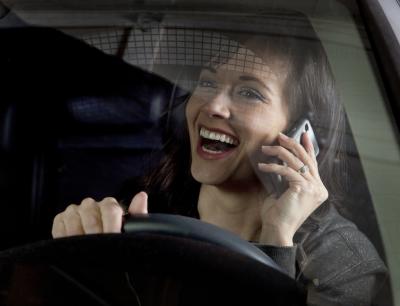Cell phones have become a mainstay of the modern age. With almost two billion in use all over the planet, the cell phone's prominent role in every part of life is inevitable. In some areas, however, its use is more of a burden than a boon. Cell phone use while driving is a dangerous game played by many drivers, and its danger is being realized in its frightening statistics.

According to the National Highway Traffic Safety Administration, 73% of drivers who own cell phones admit to using them when driving. The various types of cell phone use pose different risks, but the risks are consistent between both male and female drivers. In addition, age is not a factor in calculating the risk. Of the accidents caused by cell phone use, the Insurance Institute for Highway Safety reported that 89% involved other cars.

Talking on a cell phone, according to a study done by the University of Utah, increases the risk of an accident four times. Unfortunately, according to the National Highway Traffic Safety Administration, 3% of drivers are on a cell phone at any given time. The National Safety Council found that the influence of talking on a cell phone makes drivers twice as likely to miss a traffic light, and their reactions to those lights are slower. In addition, the Insurance Institute for Highway Safety finds that hands-free devices do not decrease the risk of talking.

Texting on a cell phone is even more dangerous than talking. A study by Virginia Tech found that texting while driving on the highway increases the risk of having an accident twenty-three times. On average, a text message distracts a driver for about five seconds, which on a highway means about one-hundred yards. Off the highway, the University of Utah found that texting increases the risk eight times.

Fourteen states have banned the use of cell phones while driving. The first was New York, enacting a ban on all hand-held devices. Other states followed with restrictions on certain drivers, like bus drivers. With an increase in studies being done on cell phone use while driving, many states now require police officers to gather information on cell phones when investigating an accident.

Although there are several disadvantages, some benefits have sprung from the presence of cell phones in driving. Now, drivers can make more emergency calls. The Cellular Telephone and Internet Association has estimated that about 139,000 emergency calls are made from cell phones every day, with the wait times for emergency services being reduced. In addition, drivers experiencing mechanical problems can now more easily contact towing services.